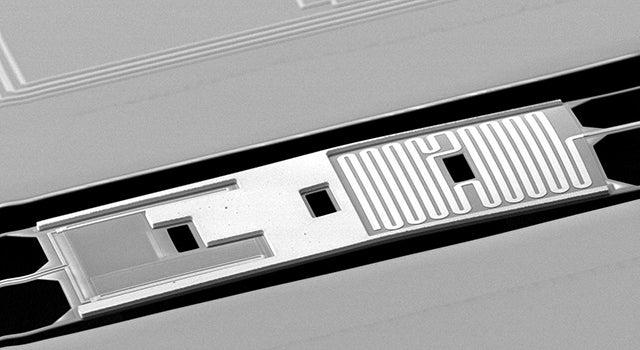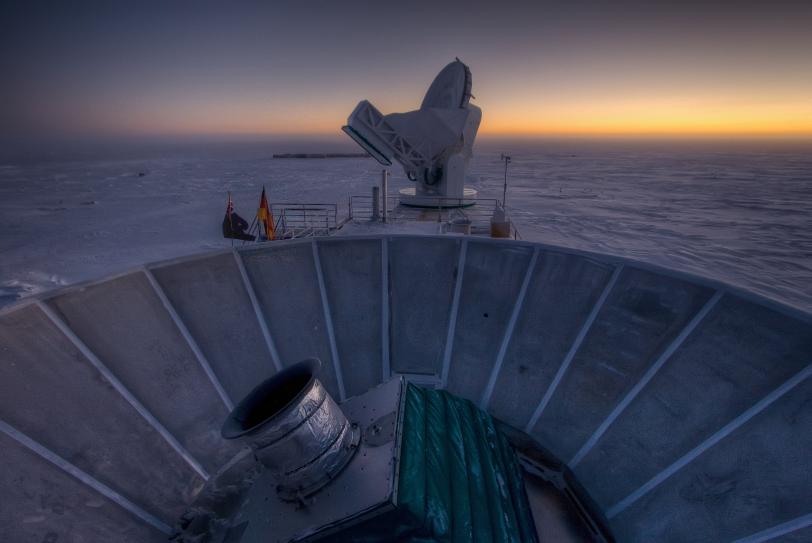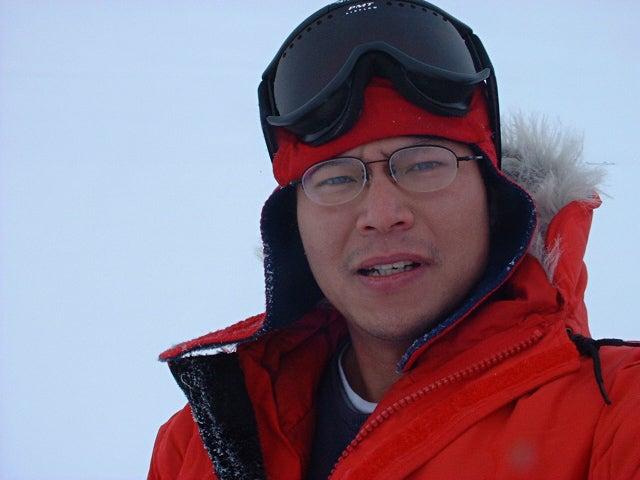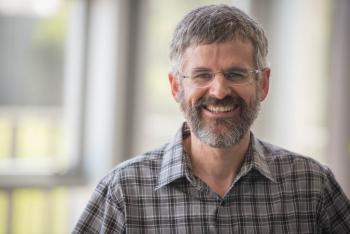SLAC, Stanford Scientists Play Key Roles in Confirming Cosmic Inflation
Two scientists at Stanford University and SLAC National Accelerator Laboratory made key contributions to the discovery of the first direct evidence for cosmic inflation – the rapid expansion of the infant universe in the first trillionth of a trillionth of a trillionth of a second after the Big Bang.
By Glennda Chui
Two scientists at Stanford University and SLAC National Accelerator Laboratory made key contributions to the discovery of the first direct evidence for cosmic inflation – the rapid expansion of the infant universe in the first trillionth of a trillionth of a trillionth of a second after the Big Bang.
Chao-Lin Kuo is one of four co-leaders of the BICEP2 collaboration that announced the discovery on Monday. An assistant professor at SLAC and Stanford, he led the development of the BICEP2 detector and is building the BICEP3 follow-on experiment in his Stanford lab for deployment at the South Pole later this year.
Kent Irwin invented the type of sensor used in BICEP2 as a graduate student at Stanford, adapted it for X-ray experiments and studies of the cosmos during a 20-year career at the National Institute for Standards and Technology, and returned to SLAC and Stanford as a professor in September to lead a major initiative in sensor development.
Both are members of the Kavli Institute for Particle Physics and Astrophysics (KIPAC), which is jointly run by SLAC and Stanford.
“It’s exciting that the same technology I developed as a grad student to search for tiny particles of dark matter is also being used to do research on the scale of the universe and to study the practical world of batteries, materials and biology in between,” Irwin said. His group is working toward installing a version of the BICEP2 sensors at SLAC’s X-ray light sources – Stanford Synchrotron Radiation Lightsource (SSRL) and Linac Coherent Light Source (LCLS) – as well as at a planned LCLS upgrade.
Searching for Ripples in Space-time
BICEP is a series of experiments that began operating at the South Pole in January 2006, taking advantage of the cold, clear, dry conditions to look for a faint, swirling polarization of light in the Cosmic Microwave Background (CMB) radiation. The light in the CMB dates back to 380,000 years after the Big Bang; before that, the early universe was opaque and no light could get through.
But some theories predicted that gravitational waves – ripples in space-time – would have been released in the first tiny fraction of a second after the Big Bang, as the universe expanded exponentially in what is known as “cosmic inflation.” If that were the case, scientists might be able to detect the imprint of those waves in the form of a slight swirling pattern known as “B-mode polarization” in the CMB.
On Monday, researchers from the BICEP2 experiment, which ran from January 2010 through December 2012, announced that they had found that smoking-gun signature, confirming the rapid inflation that had been theorized more than 30 years ago by Alan Guth and later modified by Andrei Linde, a Russian theorist who is now at Stanford.
Building a Better Detector
Kuo started working on BICEP1 as a postdoctoral researcher at Caltech in 2003. The circuitry in the experiment’s detectors was all made by hand. For the next-generation detector, BICEP2, the collaborating scientists wanted something that could be mass-produced in larger quantities, allowing them to pack more sensors into the array and collect data 10 times faster. So Kuo also started designing that technology, which used photolithography – a standard tool for making computer chips – to print sensors onto high-resolution circuit boards.
In 2008 Kuo arrived at SLAC and Stanford and began working on the next-generation experiment, BICEP3, for which he is principal investigator. Scheduled for deployment at the South Pole later this year, BICEP3 will look at a larger patch of the sky and collect data 10 times faster than its predecessor; it’s also more sensitive and more compact.
SLAC took on a bigger role in this research in October 2013 by awarding up to $2 million in Laboratory Directed Research and Development funding over three years for the “KIPAC Initiative for Cosmic Inflation,” with Kuo as principal investigator. The grant establishes a large-scale Cosmic Microwave Background program at the lab, with part of the funding going toward BICEP3, and has a goal of establishing KIPAC as a premier institute for the study of cosmic inflation. There are also plans to establish a comprehensive development, integration, and testing center at SLAC for technologies to further explore the CMB, which holds clues not only to gravitational waves and cosmic inflation but also to dark matter, dark energy and the nature of the neutrino.
A Fancy Thermometer for Tiny Signals
Kent Irwin entered the picture in the early 1990s, while a graduate student in the laboratory of Stanford/SLAC Professor Blas Cabrera. There he invented the superconducting Transition Edge Sensor, or TES, for the Cryogenic Dark Matter Search, which is trying to detect incoming particles of dark matter in a former iron mine in Minnesota. When he moved to NIST, he and his team adapted the technology for other uses and also developed a very sensitive way to read out the signal from the sensors with devices known as SQUID multiplexers.
Printing TES devices on circuit boards and using the SQUID multiplexers to read them out made it possible to create large TES arrays and greatly expanded their applications in astronomy, nuclear non-proliferation, materials analysis and homeland defense. It was also the key factor in allowing the BICEP team to expand the number of detectors in its experiments from 98 in BICEP1 to 500 in BICEP2, and opens the path to even larger arrays that will greatly increase the sensitivity of future experiments.
A TES is “basically a very fancy thermometer,” Irwin says. “We’re measuring the power coming from the CMB.” The TES receives a microwave signal from an antenna and translates it into heat; the heat then warms a piece of metal that’s chilled to the point where it hovers on the edge of being superconducting – conducting electricity with 100 percent efficiency and no resistance. When a material is at this edge, a tiny bit of incoming heat causes a disproportionately large change in resistance, giving scientists a very sensitive way to measure small temperature changes. The TES devices for BICEP2 were built at NASA’s Jet Propulsion Laboratory, and Irwin’s team at NIST made the SQUID multiplexers.
The Road Ahead
Looking ahead, CMB researchers in the United States developed a roadmap leading to a fourth-generation experiment as part of last year’s Snowmass Summer Study, which lays out a long-term direction for the national high energy physics research program. That experiment would deploy hundreds of thousands of detector sensors and stare at a much broader swath of the cosmos at an estimated cost of roughly $100 million.
“These are incredibly exciting times, with theory, technology and experiment working hand in hand to give us an increasingly clear picture of the very first moments of the universe,” said SLAC Lab Director Chi-Chang Kao. “I want to congratulate everyone in the many collaborating institutions who made this spectacular result possible. We at SLAC are looking forward to continuing to invest and work in this area as part of our robust cosmology program.”
SLAC is a multi-program laboratory exploring frontier questions in photon science, astrophysics, particle physics and accelerator research. Located in Menlo Park, California, SLAC is operated by Stanford University for the U.S. Department of Energy Office of Science.
DOE's Office of Science is the single largest supporter of basic research in the physical sciences in the United States, and is working to address some of the most pressing challenges of our time. For more information, please visit science.energy.gov.









